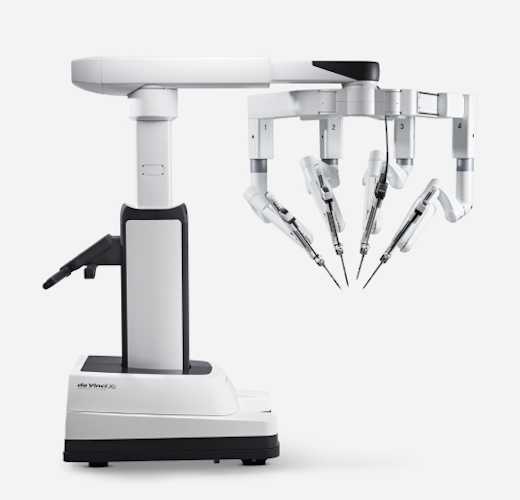What are the Different Stages of Esophageal Cancer?
Esophageal cancer is a formidable disease that affects the esophagus, the hollow tube that carries food and liquids...
+919999461292
MBBS | DNB (General Surgery, Gold Medalist) | DNB (Thoracic Surgery, Gold Medalist)
Thoracic & Lung Transplant Surgeon | Medanta – The Medicity, Gurugram

MBBS | DNB (General Surgery, Gold Medalist) | DNB (Thoracic Surgery, Gold Medalist)
Thoracic & Lung Transplant Surgeon | Medanta – The Medicity, Gurugram


Robotic surgery, also known as robot-assisted surgery or robotic-assisted thoracic surgery (RATS), is a cutting-edge technology that has revolutionized various medical fields, including thoracic surgery. In lung treatments, robotic surgery offers several advantages over traditional open surgeries and conventional minimally invasive techniques. It enables thoracic surgeons to perform complex procedures with enhanced precision, dexterity, and visualization. This article explores the process of robotic surgery in lung treatments and the benefits it brings to patients and healthcare providers.
Robotic surgery utilizes advanced robotic systems that consist of three main components:
The process of robotic lung surgery involves several steps:
Robotic surgery in lung treatments offers several advantages over traditional open surgeries and conventional laparoscopic procedures:
Robotic surgery is used in various lung procedures, including:
While robotic surgery offers significant advantages, there are certain limitations and considerations to be aware of:
As technology continues to advance, robotic systems are expected to become even more sophisticated, with improvements in imaging, instrument design, and software capabilities. The integration of artificial intelligence and augmented reality may further enhance surgical precision and decision-making during robotic lung procedures.
Esophageal cancer is a formidable disease that affects the esophagus, the hollow tube that carries food and liquids...
Esophageal cancer is a formidable and often challenging disease that affects the esophagus, the muscular tube that carries...
Esophageal cancer is a challenging and potentially life-threatening condition that requires timely diagnosis and appropriate treatment. When esophageal...
Esophageal cancer is a serious and potentially life-threatening disease that affects the esophagus, the muscular tube that carries...
Esophageal cancer is a formidable adversary that can silently develop within the esophagus, the muscular tube connecting the...
Esophageal cancer is a serious and potentially life-threatening condition that affects the esophagus, the muscular tube responsible for...
WhatsApp us